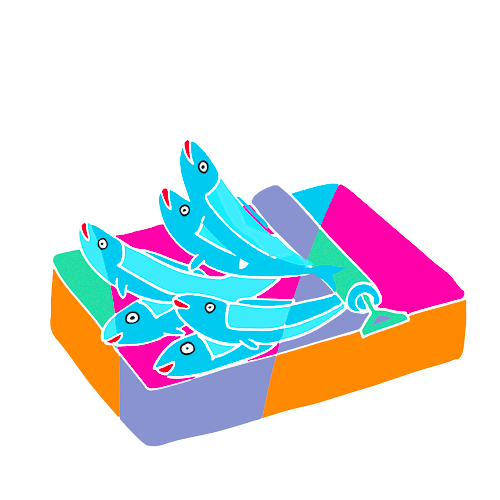Transforming Learning Through Creative Education
- Mai Ryuno
- Jul 30
- 4 min read
In today's fast-paced world, traditional educational models often fall short of engaging students and preparing them for real-life challenges. Creative learning approaches are essential in transforming the way we educate future generations. By emphasizing creativity and critical thinking, we can create a dynamic learning environment that fosters curiosity and collaboration.

Creative Learning Approaches
Creative learning approaches involve innovative and engaging teaching methods that encourage active student participation and critical thinking. These methods aim to move beyond traditional lecture-based learning to foster a more dynamic and interactive educational experience. These strategies can include inquiry-based, project-based learning, experiential learning, art integration, and more. Creative learning methods are designed to make learning more engaging and relevant for students. They aim to spark curiosity and motivation, while also allowing for adjustments based on individual student needs and interests. By shifting the focus from rote memorization to practical application, educators can spark a love for learning in their students.
Research indicates that students who engage in innovative learning strategies retain information better and apply what they've learned in real-world settings. According to a study published in the Journal of Educational Psychology, students who participated in project-based learning scored 30% higher on assessments compared to their peers who relied on traditional learning methods.
To implement creative learning approaches, teachers can start with small changes. For example, instead of giving a lecture on a historical event, they can assign a group project where students re-create the event through a presentation, a video, or a play. This method not only makes learning more interesting but also nurtures teamwork and problem-solving skills.
What is the Meaning of Creative Learning?
Creative learning is an educational process that emphasizes originality, imagination, and critical thinking. It allows students to explore ideas and express themselves in unique ways. In a creative learning environment, students are encouraged to collaborate, brainstorm, and engage in hands-on activities that stimulate their creativity.
One effective way to promote creative learning is through art integration. For instance, a science class could assign students to visualize a scientific concept as 2D, 3D, or 4D art. This not only reinforces their understanding of the topic but also allows learners to express their knowledge through creativity.
Incorporating creative learning practices can significantly enhance student engagement and motivation. According to Dr. Ken Robinson, an expert in education and creativity, fostering an environment that supports creativity can lead to more innovative thinkers. This is crucial as students will face complexities and challenges in the future that require them to think outside the box.

The Role of Technology in Transformative Learning
Technology plays a pivotal role in transforming education by providing new tools and resources that facilitate innovative learning approaches. Utilizing devices like tablets, smartphones, and interactive devices can enhance the learning experience and make it more engaging for students.
Educational apps and online resources offer students the flexibility to explore subjects at their own pace and based on their interests. These tools provide personalized learning experiences that can cater to diverse learning styles.
Additionally, online tools facilitate collaboration among students who are geographically dispersed. This can be achieved through virtual meetings, chat and text messages, shared documents, and remote attendance at virtual presentations.
AI and VR technologies also have the potential to significantly enhance student engagement and comprehension in learning.
However, it's important for teachers to thoughtfully integrate these tools. The key is to ensure they effectively support learning objectives rather than becoming distractions. This can be achieved by seamlessly incorporating these technologies into existing curricula or by designing specific lessons to teach students how to use technology effectively and critically.
Creating a Collaborative Learning Environment
A collaborative learning environment encourages students to work together and learn from each other. This approach aligns with the principles of creative education, fostering creativity and collaboration. By learning with others, students develop essential social skills and gain diverse perspectives to enrich their understanding of the subject matter.
Teachers can implement collaborative learning by organizing group projects, peer reviews, and discussions. For example, students could brainstorm ideas for a user-friendly design for public space furniture, create a model with their collective ideas, and present it to the class. This not only promotes teamwork but also allows students to practice public speaking and presentation skills.
Authentic collaboration among students thrives when individuals feel comfortable and connected, which encourages open communication and shared ideas. Before starting a project, dedicating time to casual conversations and exploring similarities and differences can significantly enhance teamwork. This "getting to know you" phase builds a crucial foundation for a more authentic collaborative learning experience.

Encouraging Lifelong Learning
The ultimate goal of education is to instill a love for learning that extends beyond the classroom and into everyday life. By embracing creative learning approaches, we can nurture curious, self-driven individuals who continue to learn throughout their lives.
To foster this mindset, educators can introduce inquiry-based learning. This approach encourages students to ask questions, research, and discover information independently. For example, a student might investigate the history of a favorite food to learn its origin and background, create a new recipe based on the findings, cook the food with the recipe, and share it with others. This allows them to see the direct relevance of their education in their everyday lives.
Additionally, teaching students how to set personal learning goals can empower them to take control of their educational journey. By encouraging autonomy and self-reflection, teachers help students develop skills that will aid them throughout their lives, both academically and personally.
By embracing innovative learning approaches and prioritizing creative education, we can create an enriching educational experience that prepares students for a dynamic and ever-changing world. Rather than only focusing on tests and grades, let's inspire curiosity, creativity, and collaboration in education, ultimately transforming the way our future leaders learn and grow.





Comments